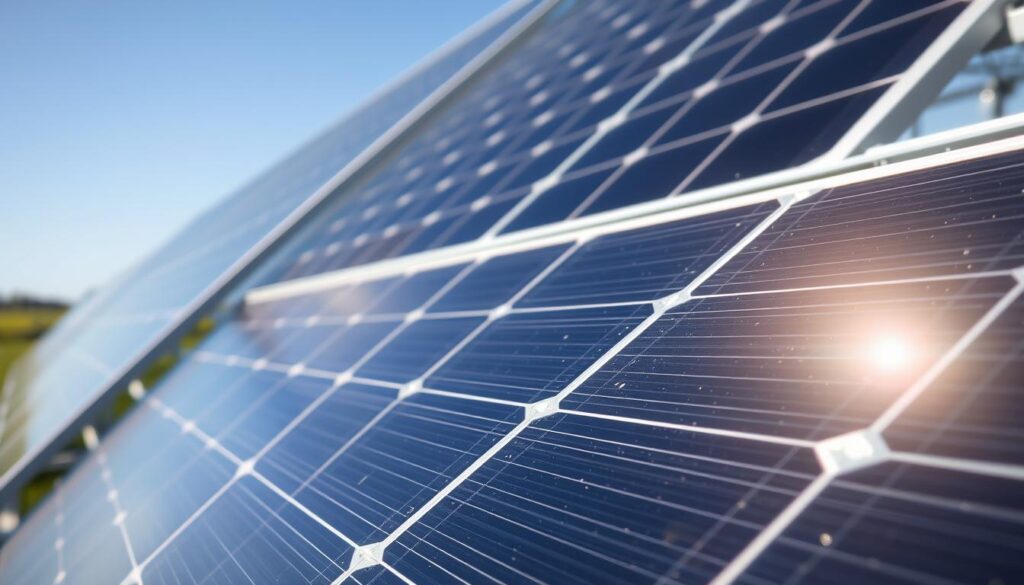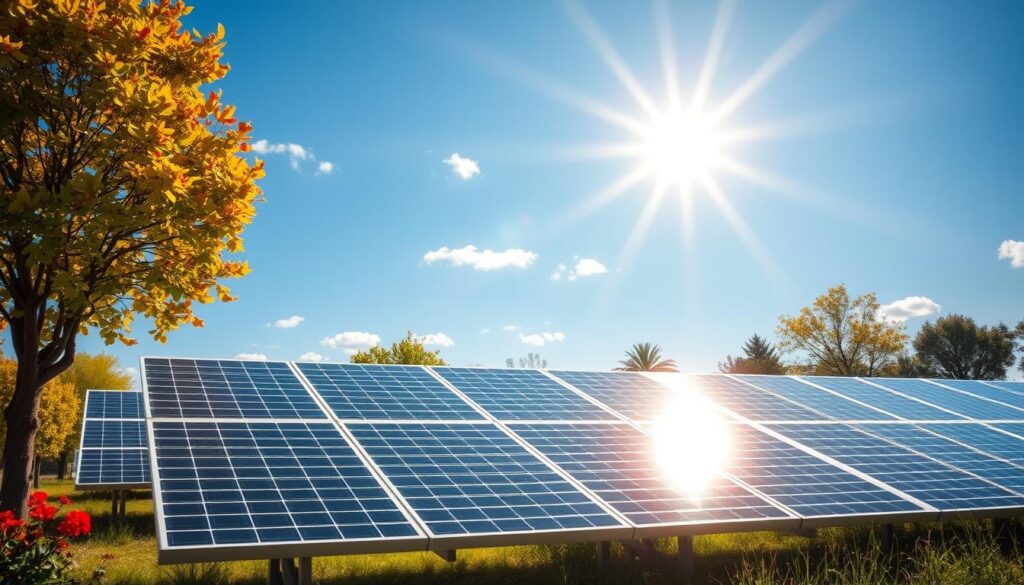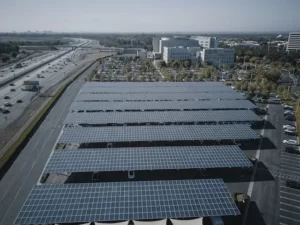When you invest in solar panels for your home, it’s important to understand their lifespan and how long you can expect to benefit from your investment. According to the Solar Energy Industries Association (SEIA), the industry standard lifespan for solar panels is 25 to 30 years, with some well-made panels potentially lasting up to 40 years. However, the actual lifespan of your solar panels will depend on a variety of factors, including the quality of the panels, environmental conditions, and proper installation and maintenance. Researching these key considerations can help you maximize the longevity and efficiency of your solar energy system.
Key Takeaways
- The industry standard lifespan for solar panels is 25 to 30 years.
- Well-made solar panels can potentially last up to 40 years.
- The actual lifespan of your solar panels depends on factors like panel quality, environmental conditions, and installation/maintenance.
- Researching these factors can help you maximize the longevity and efficiency of your solar energy system.
- Proper installation and regular maintenance are crucial for extending the lifespan of your solar panels.
What is the Industry Standard Lifespan for Solar Panels?
The industry standard for most solar panels’ lifespans is 25 to 30 years, with most reputable manufacturers offering production warranties for 25 years or more. The average degradation rate for solar panels is around 0.5% per year, meaning that after 25 years, a solar panel’s efficiency is typically expected to be around 87.5% of its original capacity. High-quality, Tier One solar panels often have a lower degradation rate of 0.3% to 0.5% per year, resulting in better long-term performance compared to lower-tier panels.
Average Lifespan and Degradation Rates
According to the Solar Energy Industries Association (SEIA), solar panels can last between 20 and 30 years, with some well-made panels potentially lasting up to 40 years. The average degradation rate for solar panels is around 0.5% per year, leading to a 2% decrease in energy production after four years and a 10% decrease after 20 years.
| Solar Panel Type | Degradation Rate | Capacity After 25 Years |
|---|---|---|
| Tier One Monocrystalline (Mono) | 0.3% – 0.5% | 93.04% |
| Tier Two Polycrystalline (Poly) | 0.5% | 88.67% |
Premium modern solar panel manufacturers like Panasonic and LG offer panels with degradation rates as low as 0.30% per year, ensuring better long-term performance and efficiency.
“Only about 5 out of 10,000 solar panels fail annually, according to an NREL study.”
While solar panels themselves have a long lifespan, other components like inverters and batteries may need to be replaced more frequently. Roof maintenance should also be synchronized with solar panel maintenance and replacement to ensure the overall system’s longevity.
Factors Affecting Solar Panel Lifespan
Quality of Solar Panels
The quality of the solar panels you install plays a crucial role in determining their lifespan. Solar panels are classified into three tiers based on factors like the manufacturer’s experience, financial stability, and reputation for quality and service.
Tier One panels, made by the most reputable manufacturers, typically have lower degradation rates of 0.3% to 0.5% per year, compared to 0.5% to 0.8% for Tier Two and Tier Three panels. While Tier One solar panel quality may cost 10% to 30% more upfront, their higher quality and longer-lasting performance can provide a better return on investment over the life of the system.
| Solar Panel Tier | Degradation Rate | Upfront Cost |
|---|---|---|
| Tier One | 0.3% – 0.5% per year | 10% – 30% higher |
| Tier Two | 0.5% – 0.8% per year | Average |
| Tier Three | 0.5% – 0.8% per year | Lower |
The solar panel tiers and their associated solar panel degradation rates are crucial factors to consider when selecting solar panels for your energy needs. Investing in high-quality Tier One panels can pay off in the long run, providing a more reliable and long-lasting solar energy solution.

“The quality of the solar panels you install plays a significant role in their lifespan. Tier One panels from reputable manufacturers offer lower degradation rates and better long-term performance.”
Environmental Conditions and Climate
The climate and environmental factors in which your solar panels are installed can significantly impact their lifespan. Regions with hotter climates, for example, tend to experience higher solar panel degradation rates as the heat causes the panel materials to break down faster. Additionally, exposure to elements like wind, hail, and humidity can contribute to accelerated deterioration of your solar panels over time.
In Sydney, Australia, the warm summers, mild winters, and high UV radiation levels can influence the longevity of solar panels. To mitigate the effects of environmental conditions, proper installation and regular maintenance, such as cleaning the panels at least twice a year, are recommended to ensure your solar system continues to perform at optimal levels.
Technological advancements have also played a role in enhancing the durability and lifespan of solar panels. Newer solar panels, such as the SunPower Maxeon series, are equipped with improved photovoltaic materials and protective coatings, allowing them to degrade at a lower rate (around 0.3% per year) compared to older models (1% per year).
When it comes to maximizing the longevity of your solar panels, understanding the impact of environmental factors and climate is crucial. By taking proactive steps, such as regular maintenance and opting for high-quality, durable panels, you can ensure your solar investment continues to provide reliable, renewable energy for years to come.
How Long Do Solar Panels Last?
When it comes to solar panels, one of the most common questions homeowners have is, “How long do they last?” The good news is that modern solar panels are designed to be incredibly durable and can provide reliable electricity for decades. Most high-quality solar panels have a lifespan of 25 to 30 years, and some well-made panels may even last up to 40 years.
However, it’s important to note that the actual lifespan and performance of your solar panels will depend on several factors, including the quality of the panels, the installation process, the maintenance routine, and the environmental conditions they face. Over time, solar panels will naturally degrade, resulting in a gradual decline in their efficiency and output.
| Panel Tier | Degradation Rate |
|---|---|
| Tier One | 0.30% annually |
| Tier Two | 0.50% annually |
| Tier Three | 0.80% annually |
On average, solar panels experience a degradation rate of about 0.5% per year, meaning that after 25 years, a panel’s output could be around 87.5% of its original capacity. By properly maintaining your solar panels and ensuring they are installed correctly, you can help maximize their lifespan and performance over time.
“Solar panels can last 25 to 30 years when properly installed and maintained, with most manufacturers offering a warranty period of at least 10 years.”
While solar panels will continue to generate electricity even after 25 years, their efficiency and output will gradually decline due to the natural degradation process. Proper care and maintenance, such as regular cleaning and professional inspections, can help extend the lifespan of your solar panels and ensure they continue to provide reliable, cost-effective energy for your home.

Maximizing Solar Panel Lifespan
Proper Installation and Maintenance
To ensure your solar panels last as long as possible, it’s essential to work with a reputable installer and maintain your system properly. Proper installation, including the use of quality racking and wiring, can help prevent damage and degradation over time. Regular maintenance, such as cleaning the panels to remove debris and checking for any issues, can also extend their lifespan.
Many solar providers offer maintenance services or include them as part of their warranty coverage, so be sure to take advantage of these options to keep your solar panels performing at their best. Following a few simple maintenance tips can go a long way in maximizing the lifespan of your solar panels.
- Have your solar panels professionally inspected every few years to identify and address any issues.
- Clean your solar panels regularly to remove dirt, dust, and debris that can reduce their efficiency.
- Monitor your solar panel system’s power output and address any significant drops in performance.
- Replace any faulty or damaged components, such as inverters or wiring, to maintain optimal system performance.
By taking these steps, you can ensure your solar panels continue to generate clean, renewable energy for decades to come. High-quality panels from reputable manufacturers, combined with proper installation and regular maintenance, are the keys to maximizing the lifespan of your solar investment.
“Well-maintained solar panel systems not only last longer but also generate more electricity, leading to significant cost savings over time.”
Warranties and Performance Guarantees
When investing in solar panels, it’s crucial to consider the manufacturer’s warranty and any performance guarantees. Most reputable solar panel brands offer production warranties of 25 years or more, ensuring the panels will continue to generate a certain level of electricity over time. Some manufacturers also provide additional guarantees, promising to replace or repair panels if their efficiency drops below a specific threshold. These warranties and guarantees can offer valuable protection for your investment and help ensure your solar panels continue to produce clean, renewable energy for decades.
The minimum length of a solar panel product warranty is typically 10 years, but nowadays, many brands guarantee their panels for up to 25 or 30 years. Similarly, some inverter warranties can last up to 25 years, while workmanship warranties generally have a minimum length of 5 years. A reputable solar installer may offer a 12-year workmanship warranty, providing additional assurance for your system.
Most performance warranties promise that solar panels will produce at least 80% of their original rated power output after 25 years. In the event of a solar installer going out of business, contacting the manufacturer directly for warranty support on solar panel products and inverters is suggested. It’s important to note that damage caused by extreme weather events or vandalism is typically not covered by most performance warranties.
| Warranty Type | Typical Length |
|---|---|
| Solar panel performance warranty | Typically 25 years |
| Solar panel product warranty | Ranges from 10 to 25 years, with better quality panels offering up to 25 years |
| Inverter warranty | Usually 5 to 10 years, with the possibility of extension by paying more |
| Installation warranty | Ranges between 12 months to 10 years, depending on the solar retailer |
| Entire system warranty | Reputable companies offer at least a 5-year warranty, with top companies providing up to 10 years |
The Clean Energy Council’s Approved Sellers are required to provide a minimum warranty of 5 years on the operation and performance of the entire solar power system. These warranties and guarantees can give you peace of mind and ensure your investment in solar panels continues to pay dividends for years to come.
Signs That Your Solar Panels May Need Replacement
While solar panels are designed to last for decades, there may come a time when they need to be replaced. Keeping a close eye on your solar energy system’s performance can help you identify signs that it’s time for an upgrade. Some key indicators that your solar panels may need replacement include:
- Significant drop in energy production: If you notice a substantial decrease in the amount of electricity your solar panels are generating, it could be a sign of degradation or system failure.
- Noticeable physical damage or deterioration: Solar panels can suffer from cracks, corrosion, or other physical issues that reduce their efficiency and lifespan.
- Decrease in efficiency below warranty thresholds: Solar panels typically come with 20-30-year warranties, and if your system’s efficiency falls below 80% of the original specifications, it may be time to consider replacement.
If you notice any of these issues with your solar panels, it’s important to consult with a professional to determine if replacement is necessary. Proper solar panel maintenance and care can help prolong the life of your system, but eventually, your panels may need to be upgraded or replaced to ensure your home continues to benefit from the clean, renewable energy they provide.
It’s important to stay vigilant and monitor your solar panel efficiency over time. By doing so, you can make informed decisions about when to replace your solar panels and ensure your home continues to enjoy the benefits of sustainable, renewable energy for years to come.
Conclusion
Solar panels represent a significant investment, but one that can provide substantial long-term benefits for your home and the environment. By understanding the industry standard lifespan of 25 to 30 years, as well as the factors that can impact their longevity, you can make an informed decision about installing and maintaining your solar energy system.
Investing in high-quality, Tier One solar panels, ensuring proper installation, and performing regular maintenance can all help maximize the lifespan and efficiency of your solar panels. With the right care and attention, your solar panels can continue to generate clean, renewable energy for decades, providing you with significant energy savings and a valuable return on your investment.
Solar panels offer a range of benefits, from long-term savings on your electricity bills to increased property value and a reduced carbon footprint. By choosing a reputable solar panel brand and following best practices for installation and maintenance, you can enjoy the advantages of solar energy for many years to come, making it a worthwhile investment in your home’s sustainable future.



